Asturian-style 'horreos' in northern Turkey (Sinop)
Posted: Mon Jan 08, 2007 6:44 am
Exactly one year ago, I was traveling from Bürnük to Sinop in northern Anatolia. In my morning daze, the bus suddenly began to glide down the mountains toward Sinop...and all the visual clues indicated I had been mysteriously transported back to Asturias. A faulty Lasik surgery? A sleep-induced hallucination? The article appeared in the IHT/Daily Star (published in Beirut), but I thought you people at Asturianus.org might enjoy it...
A sleepy port town on the banks of the Black Sea
The ancient town of Sinop in northern Turkey, with its mysterious cultural references and excellent fish, offers a fine example of historic parallels
International Herald Tribune/The Daily Star | Paul de Zardain
Beirut
SINOP, Turkey: When it is low on batteries, the human brain is a bag of tricks. One of these is the sleep-induced hallucination, which can be visual or connected to an audio input. Some might argue it can be olfactory. On a trip through northern Turkey last week, I was the object of peculiar visual effects.
Tired from a succession of bus connections that began in Istanbul's station of Esenler, I had left the freezing town of Boyabat at 7a.m. My final destination was Sinop, a town on the Black Sea coast (pop. 70,000). Technically it was only 94km away, but fog and ice conditions along the way made for a gruelling ride. The Dranaz pass, which separates the Northern Anatolian plateau from the coast, lies at an altitude of 1,336 meters. In the dead of winter, everything above the village of Bünükwas snowbound.
After two hours of twists, the bus began a gentle downhill cruise. Awakened by the sunlight, my visual cortex sent an SMS: "We wish to inform you that you are in the emerald countryside of Asturias, northern Spain." My cell phone had not been working since Istanbul, so I paid little attention. I had not paid for GPS either. But through the fogged up windows, I saw an horreo, the wooden granary raised on stilts that typically dots the countryside of northwestern Spain (the word is derived from horreum, Latin for granary).
Grain was as important to ancient Rome as oil crude is to the world economy today. Like oil tanks, the grain needed to be stored in a safe place. Raising it above ground helped prevent rot in humid climates. I rubbed my coat sleeves against the window and saw green meadows. Next to the farmsteads were apple orchards and neat rows of mustard greens. Another horreo, an exact replica of the Asturian model, popped up by the roadside. I was stumped. Was this an example of idea diffusion across Eurasia, as in Jared Diamond's "Guns, Germs and Steel?" Or just a side-effect of my Lasik operation?
By the time the bus had rolled down to the village of Sinecan, about 30 km from Sinop, a Turkish couple was eyeing me suspiciously. All other travelers seemed to doze peacefully. But I was busy jotting down notes in my "Colloquial Turkish" textbook. On page 342, I wrote: "Sinecan: horreos. Kabali: courtyard horreo. Lala and Tasmanli: more horreos." I kept track of vegetables too. Diets are adaptive and say a lot about environmental constraints. The look of surprise probably gave me away as a foreigner.
Walking down Sakarya Caddesi, Sinop's main street, few people speak English. A student dressed up as Santa Claus asked if I was Russian. Even during the summer months, the port town sees very little outside tourism. The statistic for two years ago is 5,430.
"We get some Danes, some French, some Germans. But most visitors come from Istanbul or Ankara," says Yilmaz Ramazan, owner of the Yilmaz Aile Pansiyonu, near the old fishing wharf. The water is a few degrees colder in the Black Sea than in the Aegean, and arbitrage is a compelling force in the temperature-sensitive tourist industry.
For fish buffs, northern Turkish cuisine is well known for its hamsi (anchovies), which can be marinated or fried in a light egg batter. At the Karadeniz Lokantasi (Black Sea Restaurant), on a street parallel to the wharf, they are served with biberler (long green peppers). Palamut (bonito tuna) is also popular, but not in season this time of the year. The difference in saltwater content means fish species like tuna and swordfish are smaller here than in the Aegean. The Bosphorus acts as a stopper and problems with factory effluents from the Danube, which pours 203 cubed kilometers of freshwater daily, are behind a decline in stocks. Still, the Black Sea accounts for more than 60 percent of Turkey's saltwater fisheries, with Lebanon one of its main import markets.
Sinop lies on a narrow isthmus and has been heavily fortified for 2,000 years. On the ride into town, the views of the massive promontory jutting into the Black Sea are stunning. The town was originally a commercial outpost for the Ionian city of Miletus. Founded in 630 BC, its name is derived from Sinope, the daughter of a Greek God with whom Zeus fell hopelessly in love. She asked for eternal virginity and Zeus granted the wish by letting her live the rest of her days on the stone promontory. Sinop is also the birthplace of Greek philosopher Diogenes the Cynic (412-323BC), famous for telling Alexander the Great to move out of his way while he sat in his bathtub. Later occupants include the Phrygians, Persians, Pontus kings, Romans and Byzantines. The successive waves of ethnic groups have left an imprint on the people, who range from light-haired types to others with more Central Asian features.
As a strategic port, Sinop's importance in history gradually waned. The Ottoman sultans decided early on to transfer operations to Samsun, 170 km east of here. But the strategic location opposite Sevastopol in Crimea was behind a U.S. Army facility during the Cold War. Known as Tuslog Det4, the listening base was notorious for its geodesic domes and parabolic discs. In the 1960s, music blared constantly out of the main ops building to trump Soviet intelligence. Locals still refer to it in Turkish as the "radar." With the collapse of the Soviet Union in 1991, the base closed down. And Sinop fell again into a slumber.
While the town slept off the excesses of New Year's Eve, I headed out to Sinecan to pursue the horreo question. At 10am, the dolmus (van service) waited a good 20 minutes before hitting the road. Most of the passengers were local farmers carting goods back to the village. Speaking only a smattering of Turkish, I asked to be dropped off at the roadside cayhane (tea house). The villagers quickly invited me in for tea and said the muhtar (mayor) would show me around in his tractor-bus.
Mehmet Celik, the mayor of Sinecan (pop. 300), does not know the origin of the wooden horreos in the Black Sea. In Turkish they are known as anbar (plural anbarlar), which means granary. We visited several courtyard specimens in his constituency. Farmers in this part of Turkey grow apples, corn and buckwheat. They use the anbarlar to keep their produce dry throughout the winter. Air circulates through the granary from a small entrance door to an opening on the opposite wall. On the sides with southern exposure, locals hang strings of red peppers, while chickens use the ledge to bask in the sun. The pillars (fari, in Turkish) are made of either stone or oak, and they are crowned by a tas, a circular stone that keeps mice from crawling inside. Although the principle is the same as in Asturias, the Black Sea version of the horreo tends to be smaller. Building materials also include scrap metal and plywood.
In the early imperial period, a Roman legion was composed of approximately 5000 infantry and 100 cavalry. Their supply requirements, according to studies by historian Donald Engels, included 1.5 kilograms of grain per man and 4.5 kilos per horse. Cereal grains are fast growing and high in carbohydrates. Most Roman units built public horrea to ensure a regular supply. In the frontiers of the Roman Empire, these granaries would have served to keep food at reasonable prices, much like Saudi Arabia uses spare capacity to stabilize oil markets today. Tribute to local governors in ancient Bythinia, on Turkey's Black Sea coast, was probably paid in grain.
It made sense, therefore, that the anbarlar of Sinecan were a Roman innovation. After all, most technology is borrowed. In the case of the anbanlar, the architectural blueprints were simply adapted to a new climate. As it turned out, both Asturias and Turkey's Black Sea coast share equal amounts of precipitation. The jarring similarity was no visual fluke, but an example of historical parallels.
For maps and facts on Sinop, visit www.sinop.gov.tr. The Yilmaz Aile Pansiyonu (261 5752, $25 per night) has beautiful views of the fishing wharf and the Black Sea.
http://www.dailystar.com.lb/article.asp ... e_ID=21620
© 2006 The Daily Star
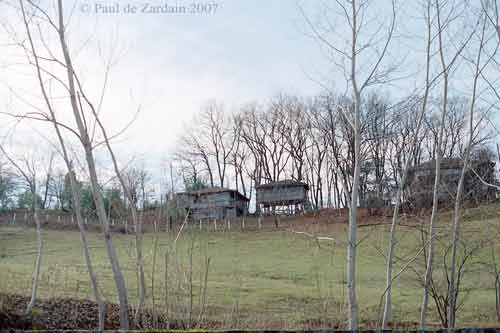
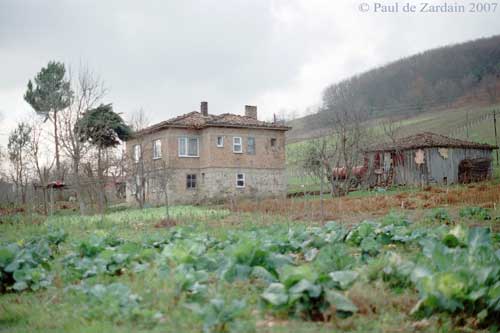
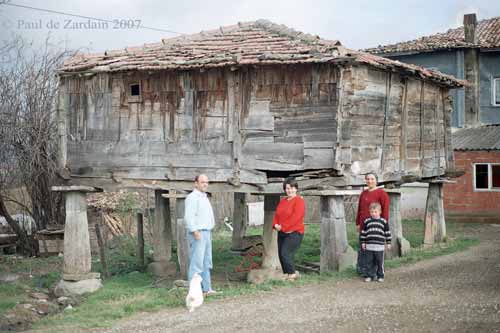
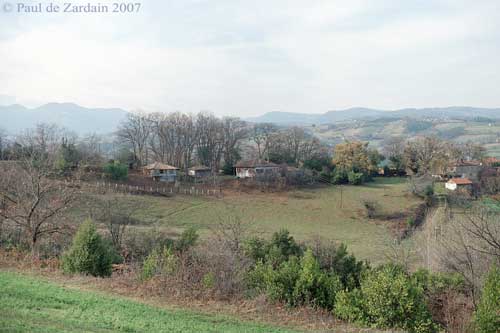
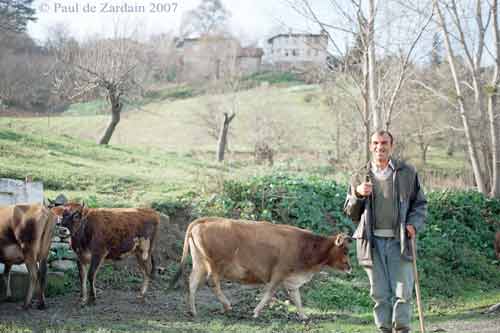
A sleepy port town on the banks of the Black Sea
The ancient town of Sinop in northern Turkey, with its mysterious cultural references and excellent fish, offers a fine example of historic parallels
International Herald Tribune/The Daily Star | Paul de Zardain
Beirut
SINOP, Turkey: When it is low on batteries, the human brain is a bag of tricks. One of these is the sleep-induced hallucination, which can be visual or connected to an audio input. Some might argue it can be olfactory. On a trip through northern Turkey last week, I was the object of peculiar visual effects.
Tired from a succession of bus connections that began in Istanbul's station of Esenler, I had left the freezing town of Boyabat at 7a.m. My final destination was Sinop, a town on the Black Sea coast (pop. 70,000). Technically it was only 94km away, but fog and ice conditions along the way made for a gruelling ride. The Dranaz pass, which separates the Northern Anatolian plateau from the coast, lies at an altitude of 1,336 meters. In the dead of winter, everything above the village of Bünükwas snowbound.
After two hours of twists, the bus began a gentle downhill cruise. Awakened by the sunlight, my visual cortex sent an SMS: "We wish to inform you that you are in the emerald countryside of Asturias, northern Spain." My cell phone had not been working since Istanbul, so I paid little attention. I had not paid for GPS either. But through the fogged up windows, I saw an horreo, the wooden granary raised on stilts that typically dots the countryside of northwestern Spain (the word is derived from horreum, Latin for granary).
Grain was as important to ancient Rome as oil crude is to the world economy today. Like oil tanks, the grain needed to be stored in a safe place. Raising it above ground helped prevent rot in humid climates. I rubbed my coat sleeves against the window and saw green meadows. Next to the farmsteads were apple orchards and neat rows of mustard greens. Another horreo, an exact replica of the Asturian model, popped up by the roadside. I was stumped. Was this an example of idea diffusion across Eurasia, as in Jared Diamond's "Guns, Germs and Steel?" Or just a side-effect of my Lasik operation?
By the time the bus had rolled down to the village of Sinecan, about 30 km from Sinop, a Turkish couple was eyeing me suspiciously. All other travelers seemed to doze peacefully. But I was busy jotting down notes in my "Colloquial Turkish" textbook. On page 342, I wrote: "Sinecan: horreos. Kabali: courtyard horreo. Lala and Tasmanli: more horreos." I kept track of vegetables too. Diets are adaptive and say a lot about environmental constraints. The look of surprise probably gave me away as a foreigner.
Walking down Sakarya Caddesi, Sinop's main street, few people speak English. A student dressed up as Santa Claus asked if I was Russian. Even during the summer months, the port town sees very little outside tourism. The statistic for two years ago is 5,430.
"We get some Danes, some French, some Germans. But most visitors come from Istanbul or Ankara," says Yilmaz Ramazan, owner of the Yilmaz Aile Pansiyonu, near the old fishing wharf. The water is a few degrees colder in the Black Sea than in the Aegean, and arbitrage is a compelling force in the temperature-sensitive tourist industry.
For fish buffs, northern Turkish cuisine is well known for its hamsi (anchovies), which can be marinated or fried in a light egg batter. At the Karadeniz Lokantasi (Black Sea Restaurant), on a street parallel to the wharf, they are served with biberler (long green peppers). Palamut (bonito tuna) is also popular, but not in season this time of the year. The difference in saltwater content means fish species like tuna and swordfish are smaller here than in the Aegean. The Bosphorus acts as a stopper and problems with factory effluents from the Danube, which pours 203 cubed kilometers of freshwater daily, are behind a decline in stocks. Still, the Black Sea accounts for more than 60 percent of Turkey's saltwater fisheries, with Lebanon one of its main import markets.
Sinop lies on a narrow isthmus and has been heavily fortified for 2,000 years. On the ride into town, the views of the massive promontory jutting into the Black Sea are stunning. The town was originally a commercial outpost for the Ionian city of Miletus. Founded in 630 BC, its name is derived from Sinope, the daughter of a Greek God with whom Zeus fell hopelessly in love. She asked for eternal virginity and Zeus granted the wish by letting her live the rest of her days on the stone promontory. Sinop is also the birthplace of Greek philosopher Diogenes the Cynic (412-323BC), famous for telling Alexander the Great to move out of his way while he sat in his bathtub. Later occupants include the Phrygians, Persians, Pontus kings, Romans and Byzantines. The successive waves of ethnic groups have left an imprint on the people, who range from light-haired types to others with more Central Asian features.
As a strategic port, Sinop's importance in history gradually waned. The Ottoman sultans decided early on to transfer operations to Samsun, 170 km east of here. But the strategic location opposite Sevastopol in Crimea was behind a U.S. Army facility during the Cold War. Known as Tuslog Det4, the listening base was notorious for its geodesic domes and parabolic discs. In the 1960s, music blared constantly out of the main ops building to trump Soviet intelligence. Locals still refer to it in Turkish as the "radar." With the collapse of the Soviet Union in 1991, the base closed down. And Sinop fell again into a slumber.
While the town slept off the excesses of New Year's Eve, I headed out to Sinecan to pursue the horreo question. At 10am, the dolmus (van service) waited a good 20 minutes before hitting the road. Most of the passengers were local farmers carting goods back to the village. Speaking only a smattering of Turkish, I asked to be dropped off at the roadside cayhane (tea house). The villagers quickly invited me in for tea and said the muhtar (mayor) would show me around in his tractor-bus.
Mehmet Celik, the mayor of Sinecan (pop. 300), does not know the origin of the wooden horreos in the Black Sea. In Turkish they are known as anbar (plural anbarlar), which means granary. We visited several courtyard specimens in his constituency. Farmers in this part of Turkey grow apples, corn and buckwheat. They use the anbarlar to keep their produce dry throughout the winter. Air circulates through the granary from a small entrance door to an opening on the opposite wall. On the sides with southern exposure, locals hang strings of red peppers, while chickens use the ledge to bask in the sun. The pillars (fari, in Turkish) are made of either stone or oak, and they are crowned by a tas, a circular stone that keeps mice from crawling inside. Although the principle is the same as in Asturias, the Black Sea version of the horreo tends to be smaller. Building materials also include scrap metal and plywood.
In the early imperial period, a Roman legion was composed of approximately 5000 infantry and 100 cavalry. Their supply requirements, according to studies by historian Donald Engels, included 1.5 kilograms of grain per man and 4.5 kilos per horse. Cereal grains are fast growing and high in carbohydrates. Most Roman units built public horrea to ensure a regular supply. In the frontiers of the Roman Empire, these granaries would have served to keep food at reasonable prices, much like Saudi Arabia uses spare capacity to stabilize oil markets today. Tribute to local governors in ancient Bythinia, on Turkey's Black Sea coast, was probably paid in grain.
It made sense, therefore, that the anbarlar of Sinecan were a Roman innovation. After all, most technology is borrowed. In the case of the anbanlar, the architectural blueprints were simply adapted to a new climate. As it turned out, both Asturias and Turkey's Black Sea coast share equal amounts of precipitation. The jarring similarity was no visual fluke, but an example of historical parallels.
For maps and facts on Sinop, visit www.sinop.gov.tr. The Yilmaz Aile Pansiyonu (261 5752, $25 per night) has beautiful views of the fishing wharf and the Black Sea.
http://www.dailystar.com.lb/article.asp ... e_ID=21620
© 2006 The Daily Star




